Porsche Design 1919 Chronotimer Flyback Blue & Leather
Bringing the Porsche 911 legend to the wrist, with a classy blue colour scheme.
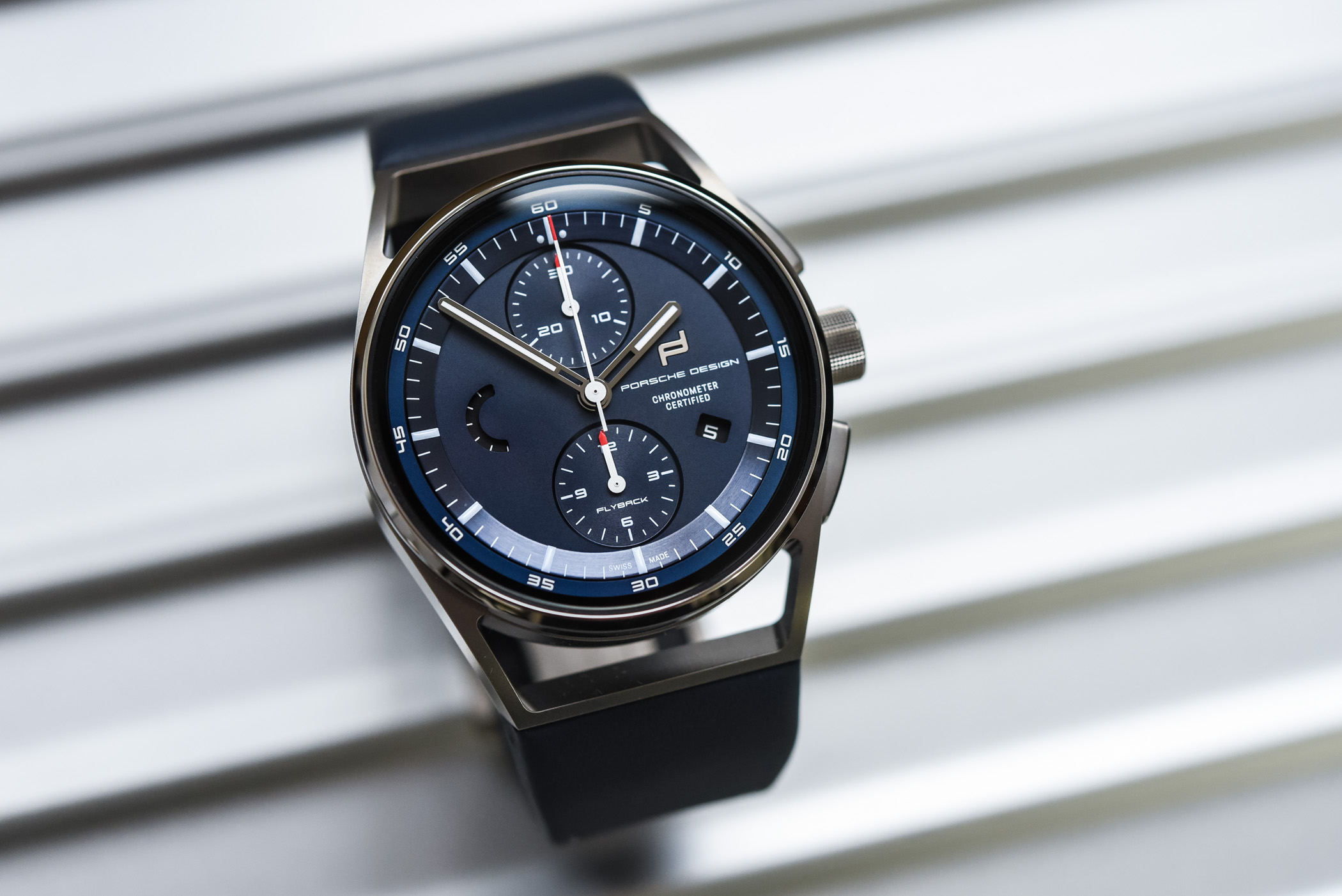
Minimalistic but detailed, designed with true ergonomics in mind, as precisely built as the cars that share their name with this watch… Porsche Design watches are unique, in the best sense of this word. But they aren’t just an exercise in style; what you get with Porsche Design watches goes well beyond just a pretty face. We’ve seen this in the past already and it is still present in the brand’s latest creations, including this new version of the Porsche Design 1919 Chronotimer Flyback, now available in a new (and handsome) Blue & Leather edition.
Whether you’re into cars or not doesn’t really matter here. Porsche Design watches are not necessarily designed to be automotive-related products, although they are designed with the Porsche spirit. And when you look at the 911, an icon of motorsport that has been around since 1963, and that has clearly stood the test of time to become a timeless piece of contemporary engineering, you’ll see that Porsche Design knows a thing or two about creating beautiful but also performant machines.
Porsche Design watches – and most objects produced by the Studio F.A. Porsche – share one thing: a love for no-nonsense, no-frills design where details are not there merely for the sake of decoration. This could sound a bit dull at first, but in fact, it isn’t. The beauty of a Porsche Design watch lies in its rational German philosophy of “form follows function”, where ergonomics guide the pen of the designer. This was true back in 1963 when Ferdinand Alexander “Butzi” Porsche designed the 911. It was true in 1972 when he created his first watches, pioneering the use of titanium and black coating. And seeing the present Porsche Design 1919 Chronotimer Flyback Blue & Leather just reinforces this concept.
The Porsche Design 1919, a unique shape
Since it’s inception, Porsche Design is about understated, sleek, ergonomic design and the watches, with the first-ever Porsche Design watch introduced in 1972, follow suit. Everything you’ll see on the watches is here for a good reason. Every shape has its raison d’être, and in the case of the 1919 Chronotimer, this results in a watch that is shaped like no other piece on the market.
The 1919 collection, whatever the movement or complication inside the case, has been built around a very specific design. Everything starts with a minimalistic, cylinder-like central container. And then comes the rest of the case, which has been designed to enhance resistance, strength but also (and mainly) ergonomics. The case is designed as a whole, as a single piece, which follows the curvature of the wrist, with a hollowed lug module that makes the central case virtually a floating case. Despite the very sleek lines, the watch has a great presence and a true personality. It feels consistent and there’s an overall “engineered” feel to it.
With its 42mm case and 14.9mm height, this Porsche Design 1919 Chronotimer Flyback is not per se a small watch. It is also, visually speaking, quite large. Still, this is a piece that deserves to be worn to be understood. On the wrist, the concept of ergonomics really makes sense. Balanced, secured, solid but not massive… Quite a special piece.
Titanium, of course
What would a Porsche Design be without a titanium case? This material is part of the brand’s DNA. With the help of IWC’s technologies (as of 1978 IWC was manufacturing partner of Porsche Design), the brand was one of the first to introduce full titanium watches, including titanium bracelet, on the market (Citizen pioneered the use of titanium for wristwatches in 1970), something that would later become a hallmark of PD watches.
Titanium has been a favourite of PD for years, for good reasons. With its focus on ergonomics, titanium has given Porsche Design the freedom to create larger watches without compromising on the comfort or the performance of the watches. Titanium is 40% lighter than stainless steel but also has high tensile strength making it a material of choice for racing cars. The Porsche Design 1919 Chronotimer Flyback is, of course, manufactured in titanium, however, now with Grade 5, allowing the brand to combine the usual matte, glass bead-blasted surfaces with elegant polished accents – on the bezel and on the pushers. Combining the unusual but effective shape of the case with this material enhances the comfort on the wrist.
Blue dial and 911-sourced leather
The Porsche Design 1919 Chronotimer Flyback is not an entirely new model. It was presented at Baselworld 2018 with its new mechanics. The model we have here is a new version with new colours and new strap. First is the new deep-blue dial – a colour that matches really with the darker tone of titanium. The dial of the 1919 Chronotimer follows the same rules as the case. Legibility is key here and all the indications are well-positioned and differentiated from one another. The dial has multiple surface finishes with a matte blue central area and a circular brushed minute track.
The dial is simple, efficient and symmetrical. The hands and the hour indexes are filled with Super-LumiNova and all the indications are executed in white to provide contrast with the blue background. The chronograph indications include the central seconds and 30-minute and 12-hour counters. To keep the dial balanced, the small seconds has been reduced to a discreet running indicator, echoing the logo at 3 o’clock. Maybe, for the sake of elegance, the date could be removed.
The colour chosen for this new Porsche Design 1919 Chronotimer Flyback Blue & Leather is relatively discreet and corresponds to the overall minimalism of the watch. Often seen on a titanium bracelet, PD has decided to add a touch of elegance to this piece with an integrated leather strap, which is made of fine calfskin – the same material used in the interiors of Porsche sports cars. The strap is perfectly integrated into the design of the watch and features grey stitching and a titanium folding clasp.
Chronometer Flyback Engine
For many years, Porsche Design watches were equipped with ETA Valjoux movements or Lemania calibres. For instance, the previous 1919 Chronotimer watches, like this one, relied on third-party movements – the Sellita SW-500 to be precise. In 2017 though, the brand decided to up its game and to introduce a new movement, the “GT3 version” of the automatic chronograph if you like… sharper, more precise, with better performance and more functionalities.
Dubbed Porsche Design Calibre WERK 01.200, this movement was developed in-house and is now manufactured by trusted third parties according to Porsche Design’s own specifications. As such, it is a so-called “proprietary” movement – a practice used often in car-making.
The Calibre WERK 01.200 is an integrated, automatic cam-operated chronograph which shares its base architecture with the trusted Valjoux base. Yet, it has been upgraded on multiple levels. First, it is equipped with a flyback function, allowing the recording of several timing sessions in a row. The stop-reset-start sequence can be operated by a single push of the button at 4 o’clock, instead of the classic 3-step sequence – a useful feature for pilots and crew members timing several laps in a row. Also, the movement features a tungsten winding mass, for better winding efficiency.
With its focus on precision, the movement is chronometer-certified by the COSC – Contrôle Officiel Suisse des Chronomètres. The rest of the specifications are familiar, with a 4Hz frequency and a 42-hour power reserve. The movement is decorated with blackened bridges, plates and rotor, contrasting with the rhodium-plated and brass parts.
Price and availability
This new Blue & Leather edition of the Porsche Design 1919 Chronotimer Flyback is a permanent model in the collection and is now available at retailers and online. It will be priced at EUR 5,950 (incl. taxes) and can be ordered here, at www.porsche-design.com.

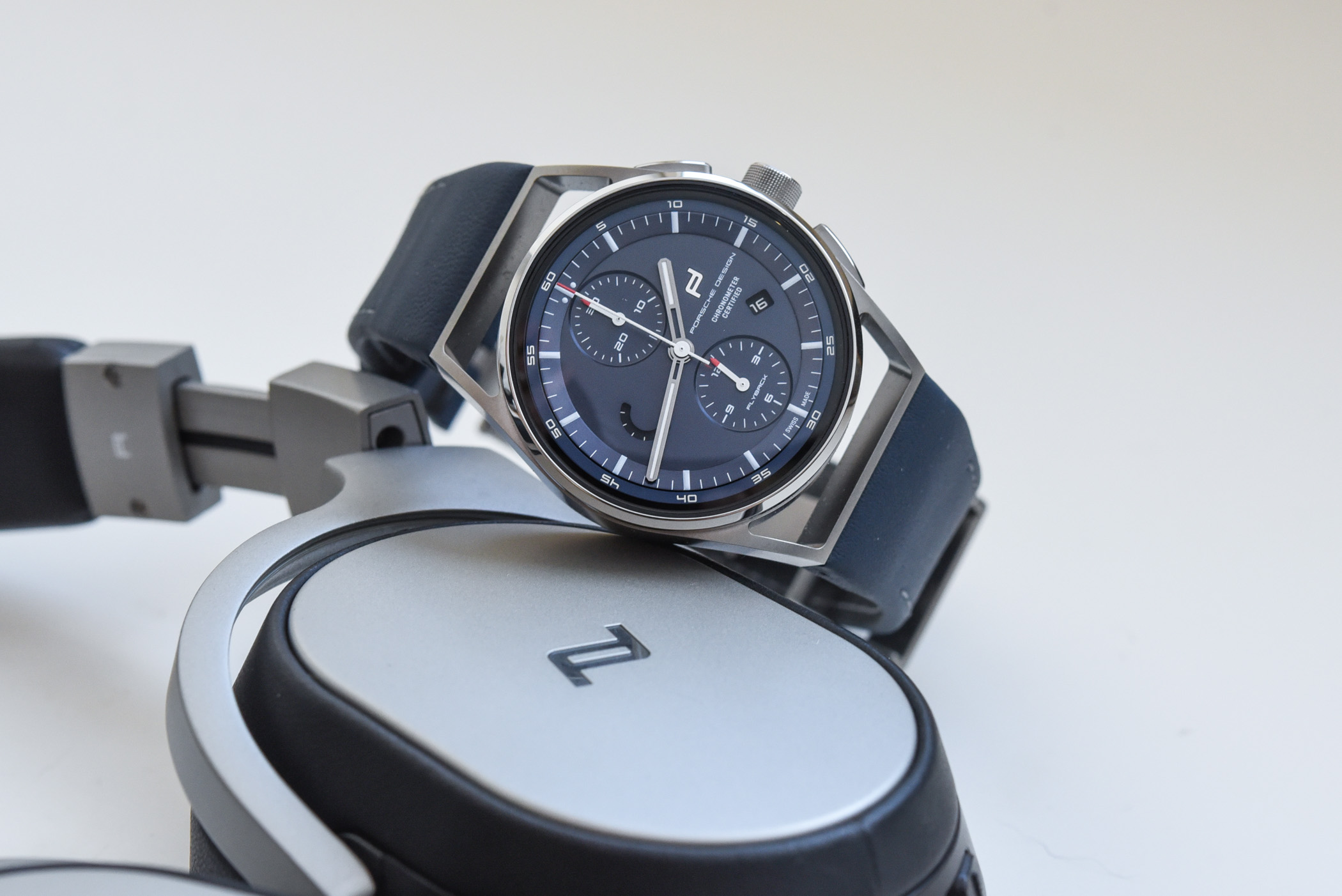
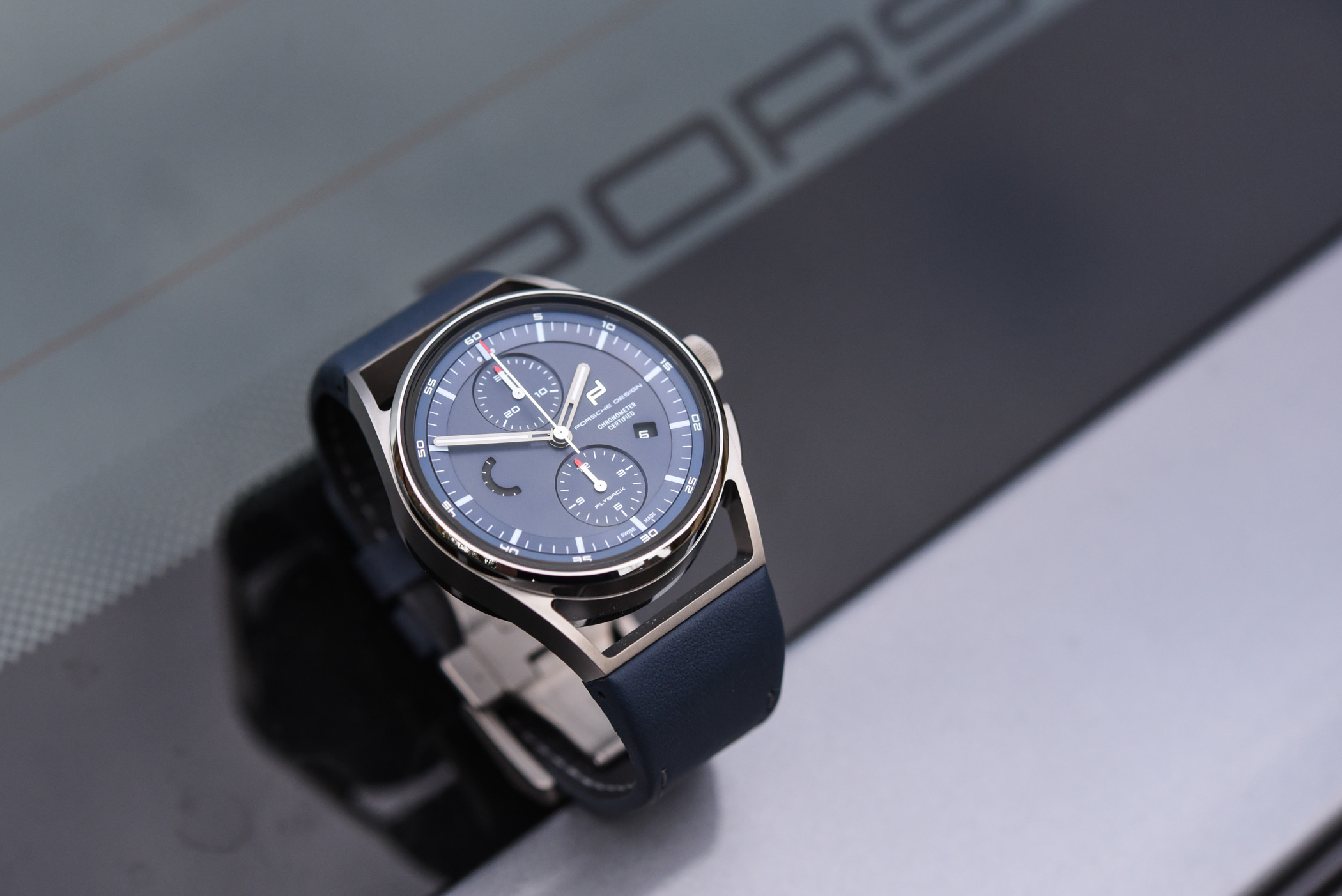
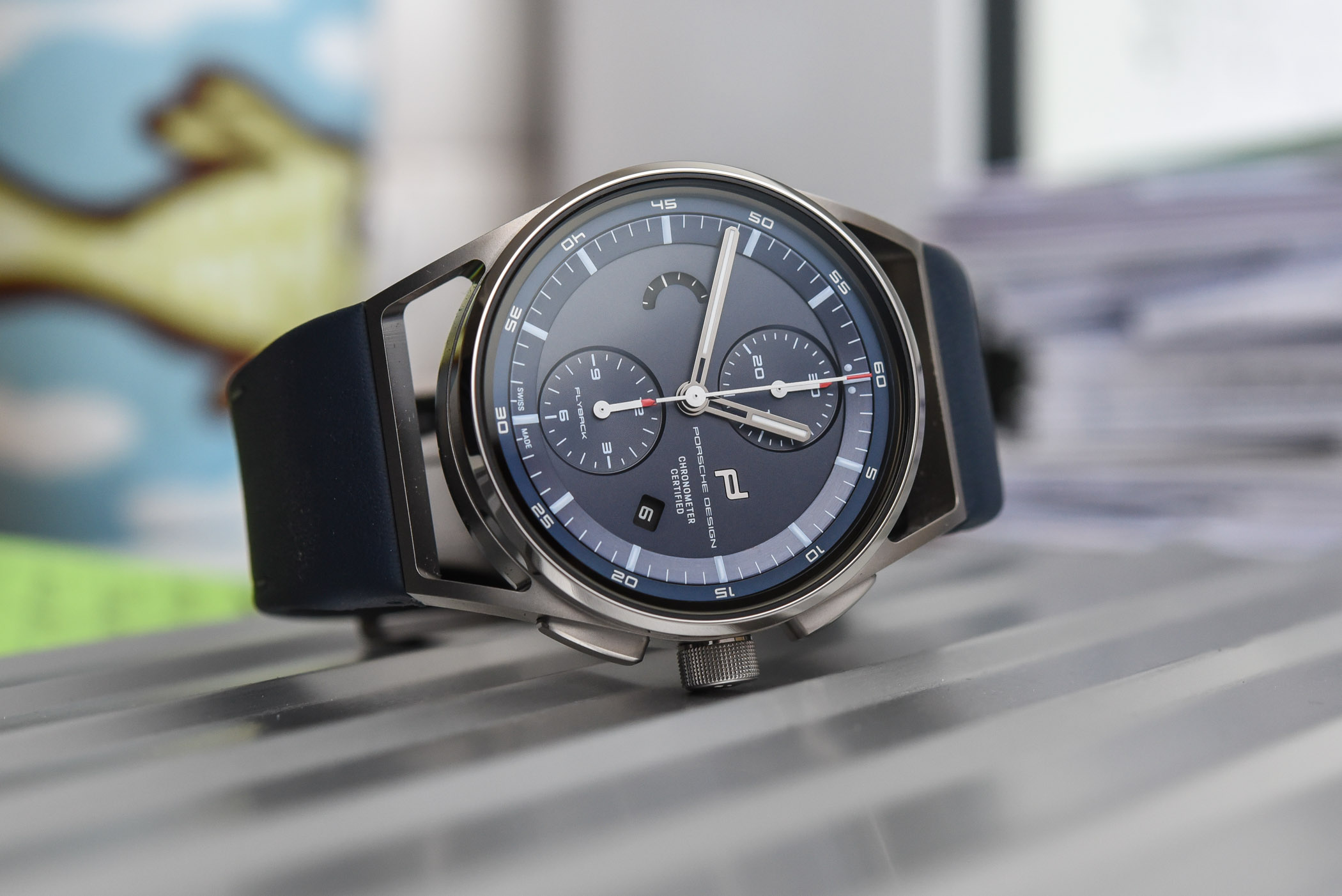
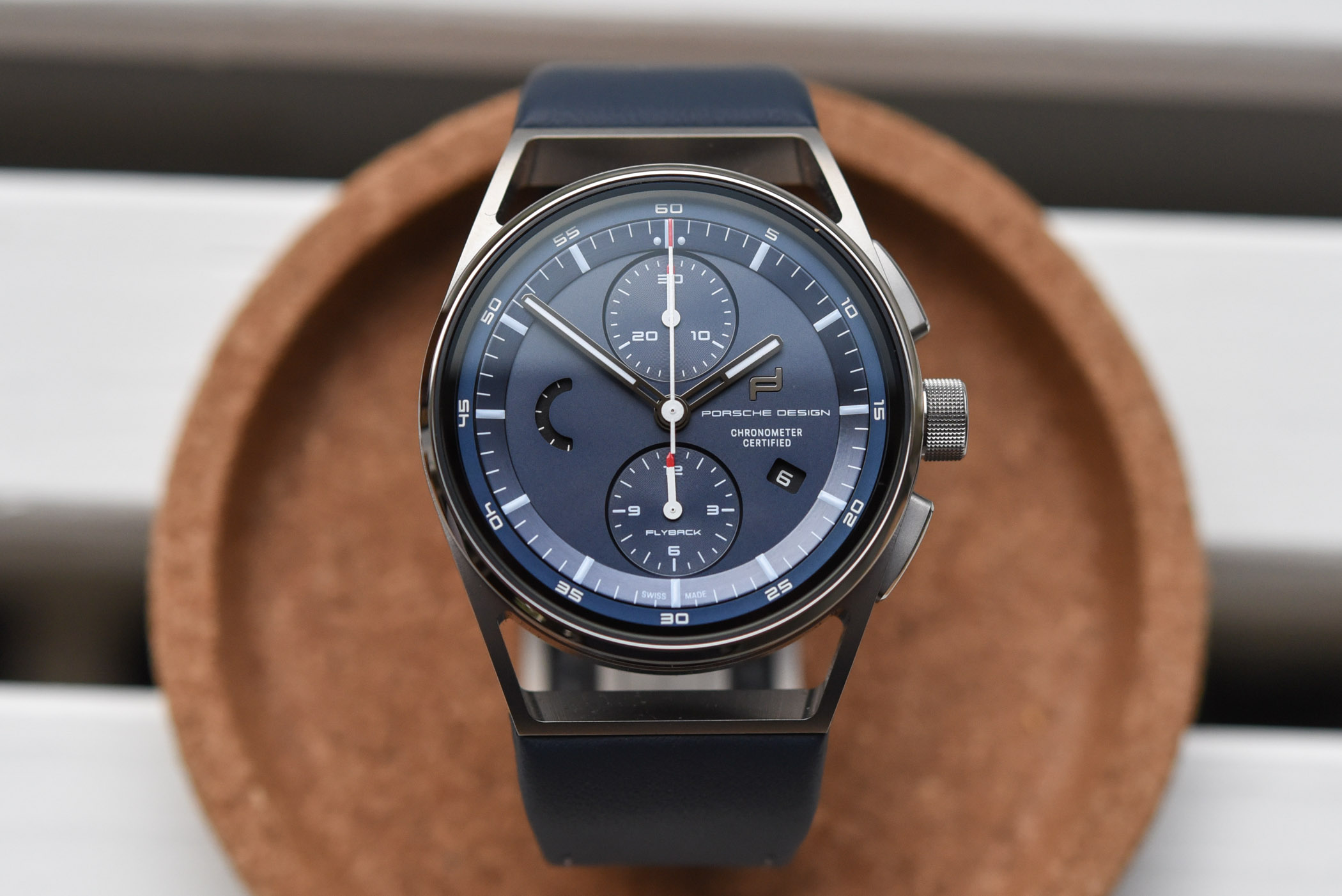

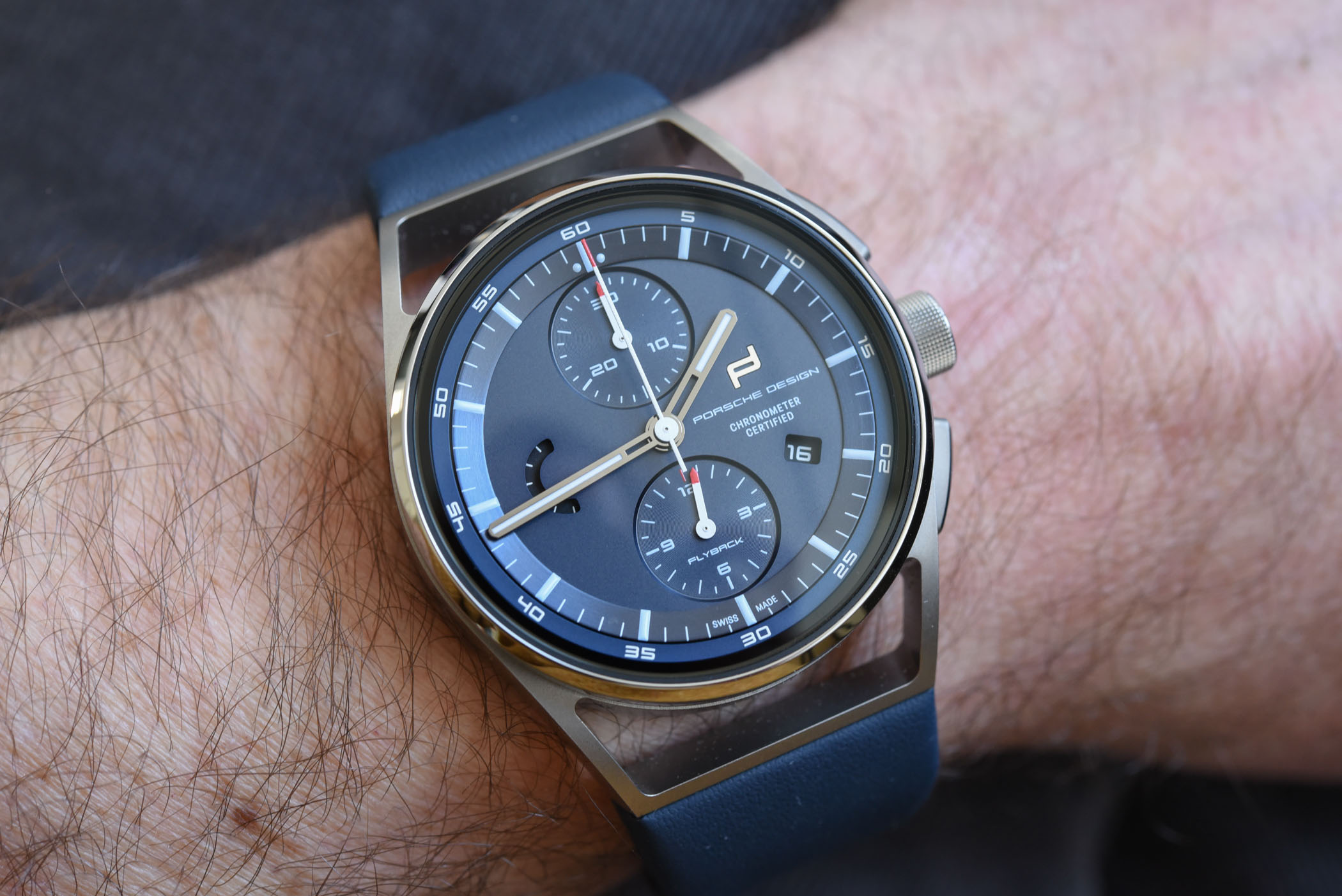
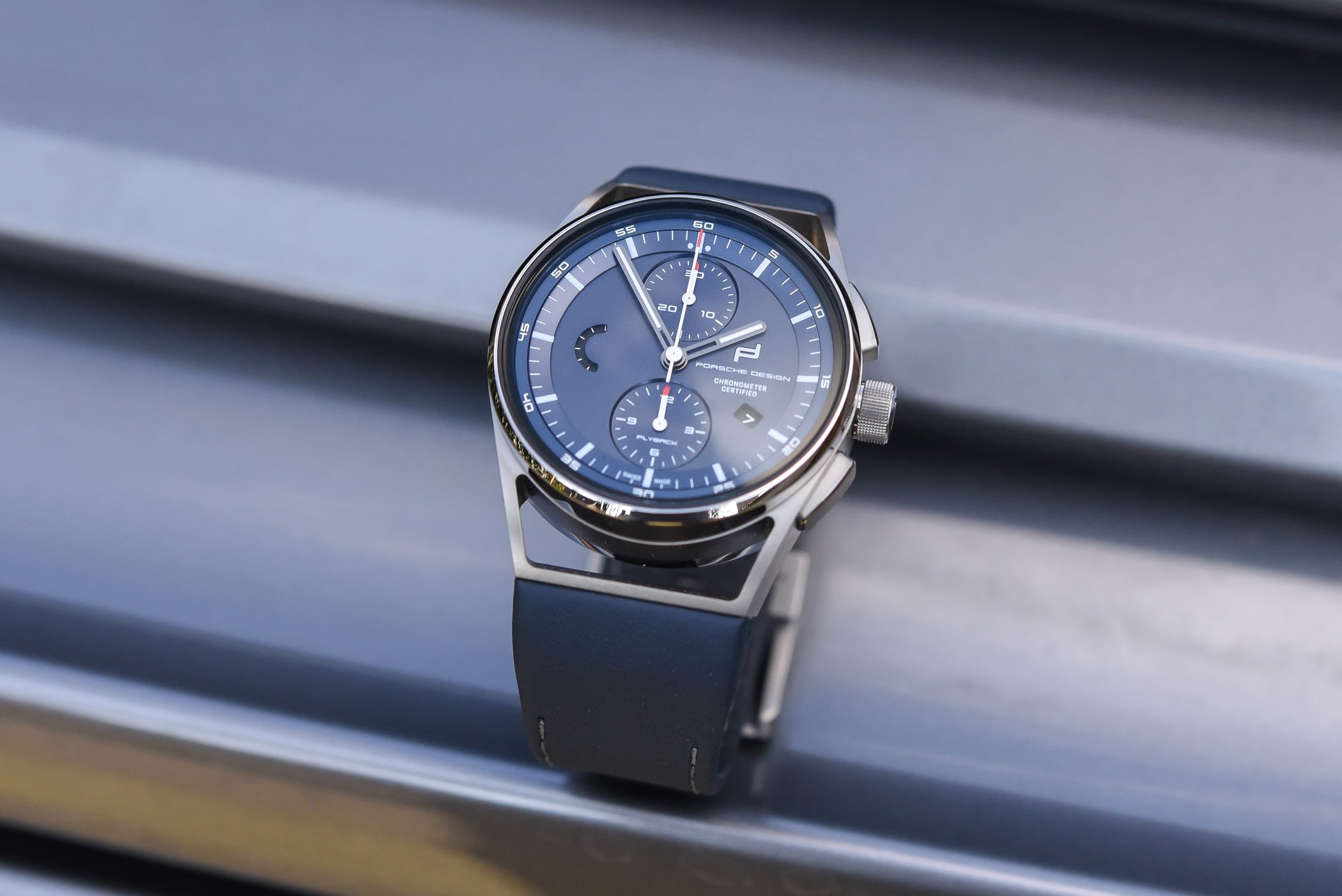
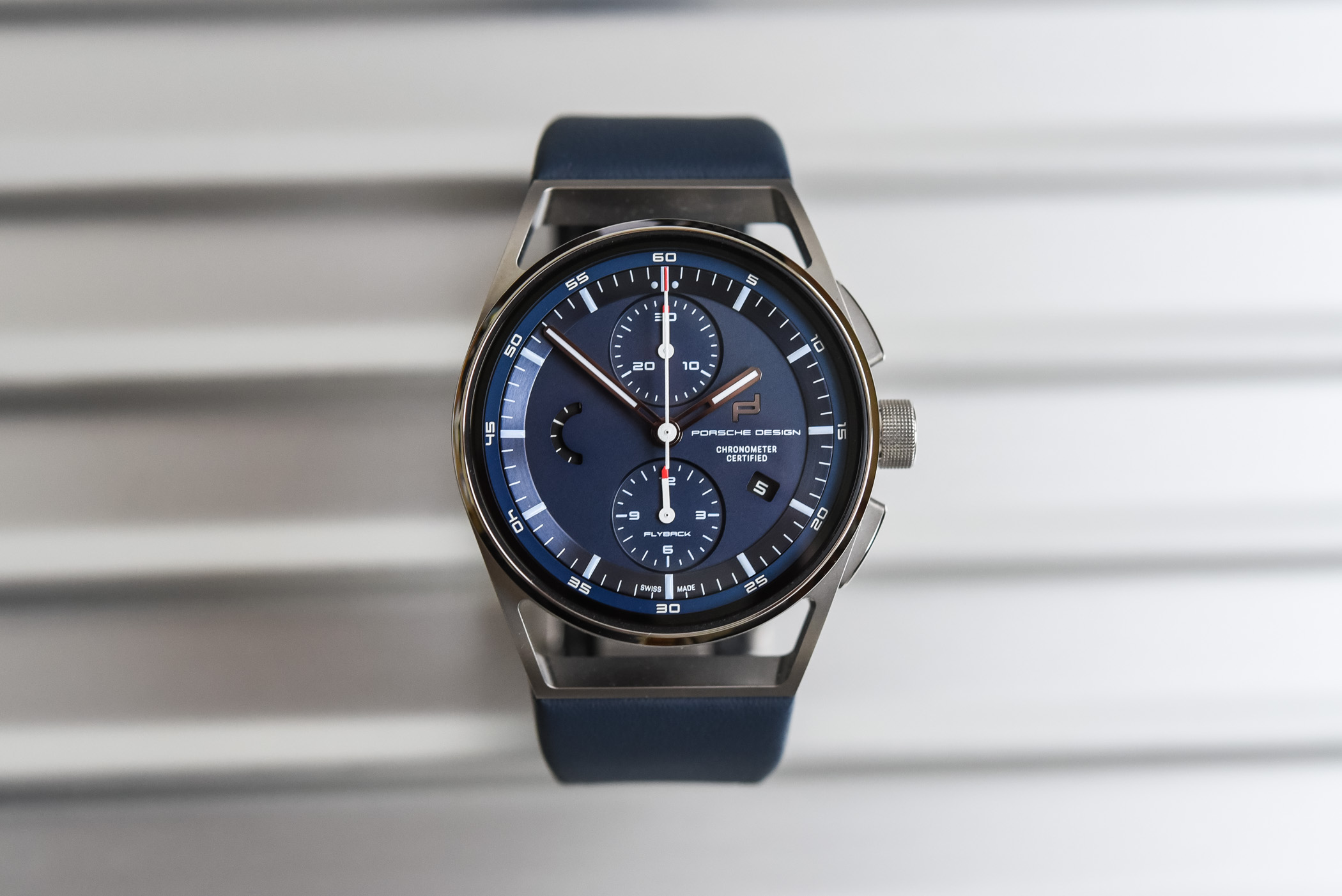
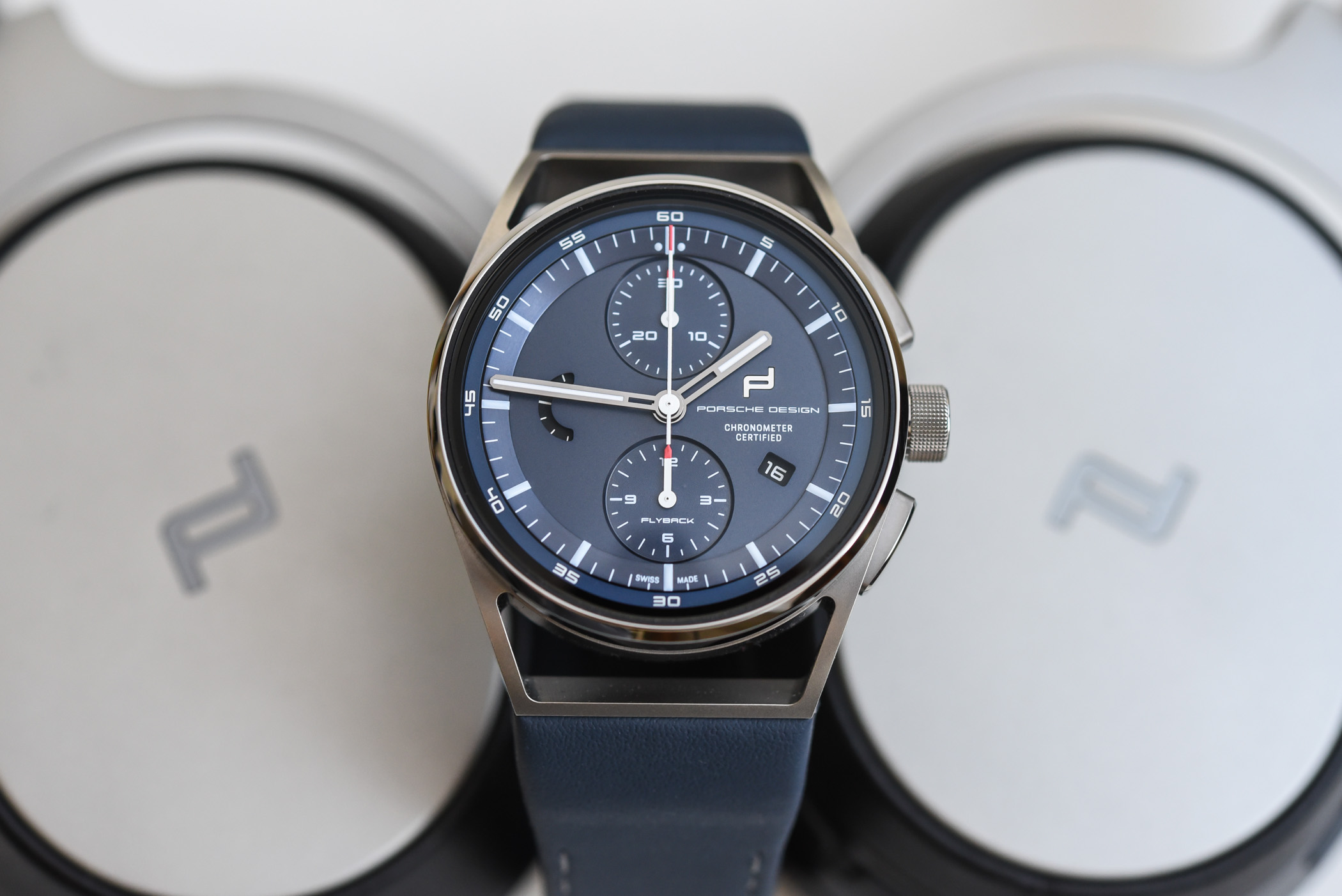
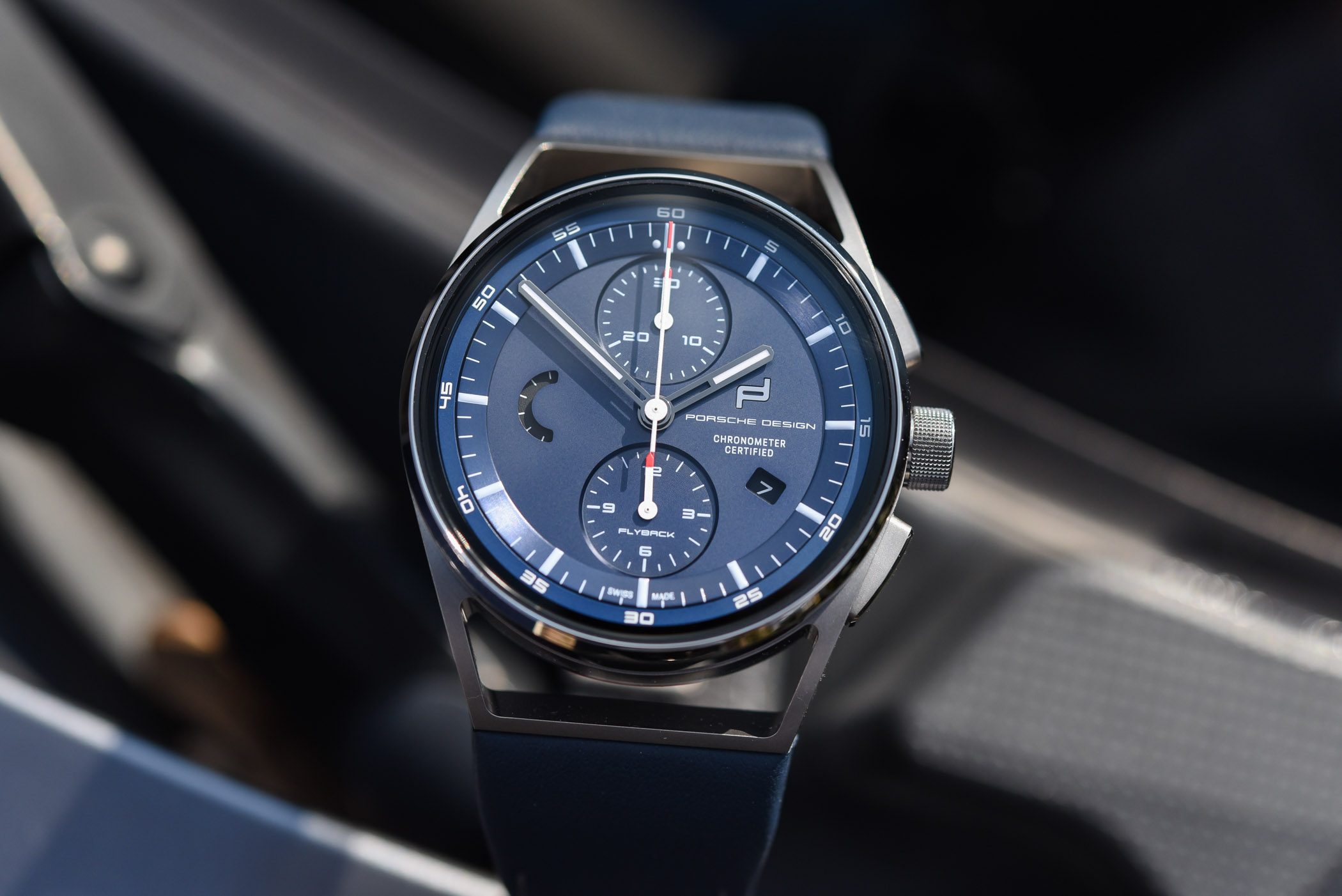
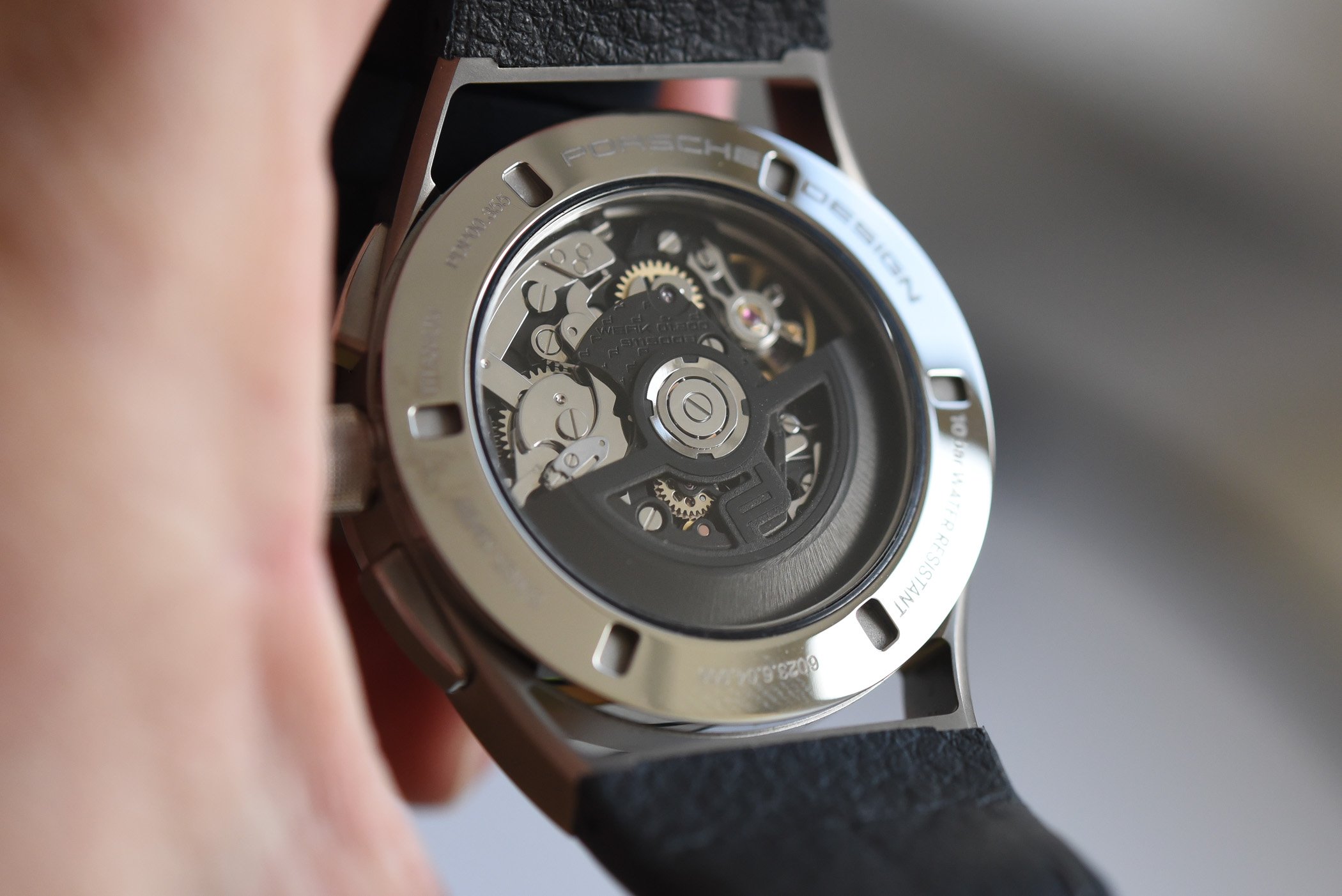
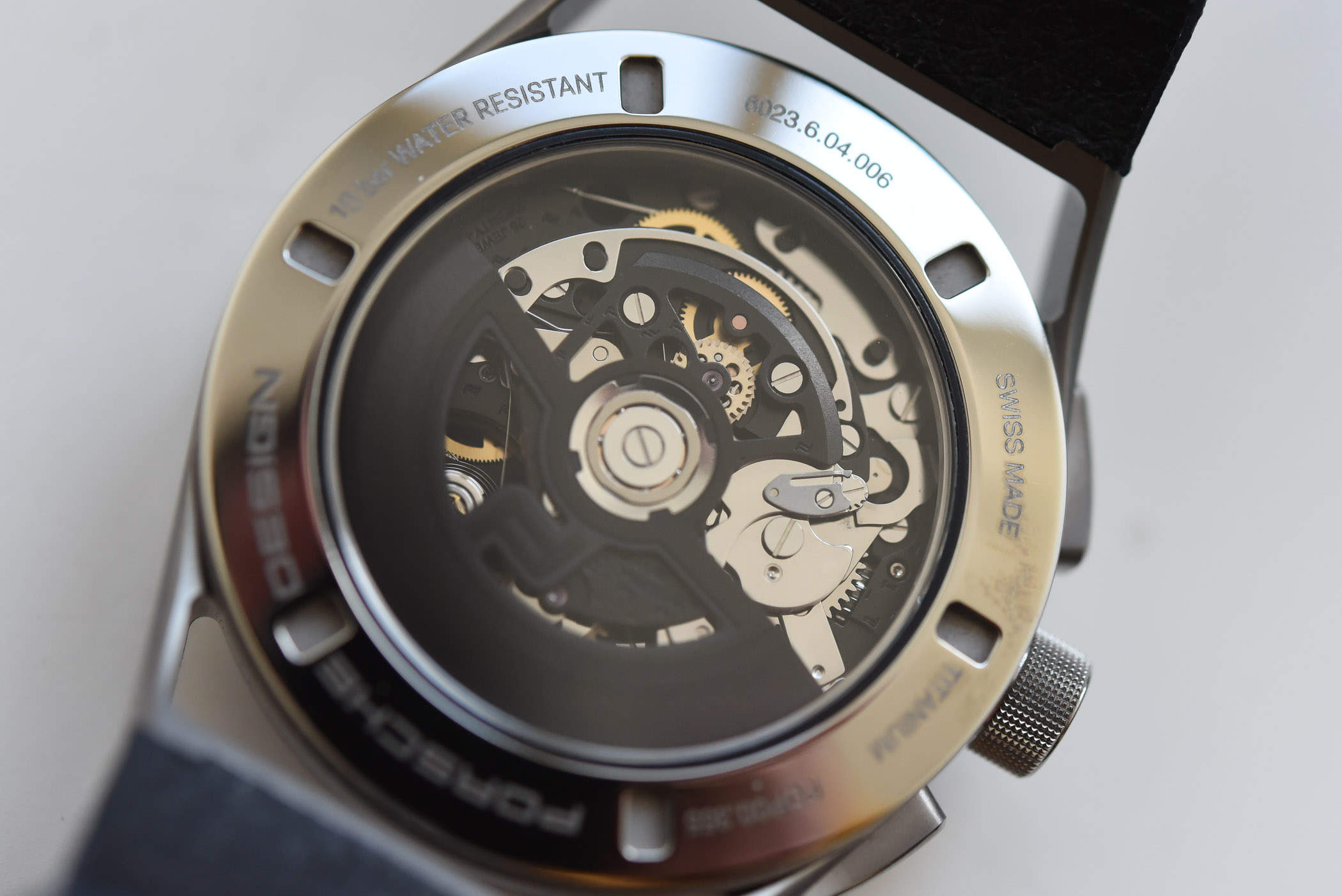
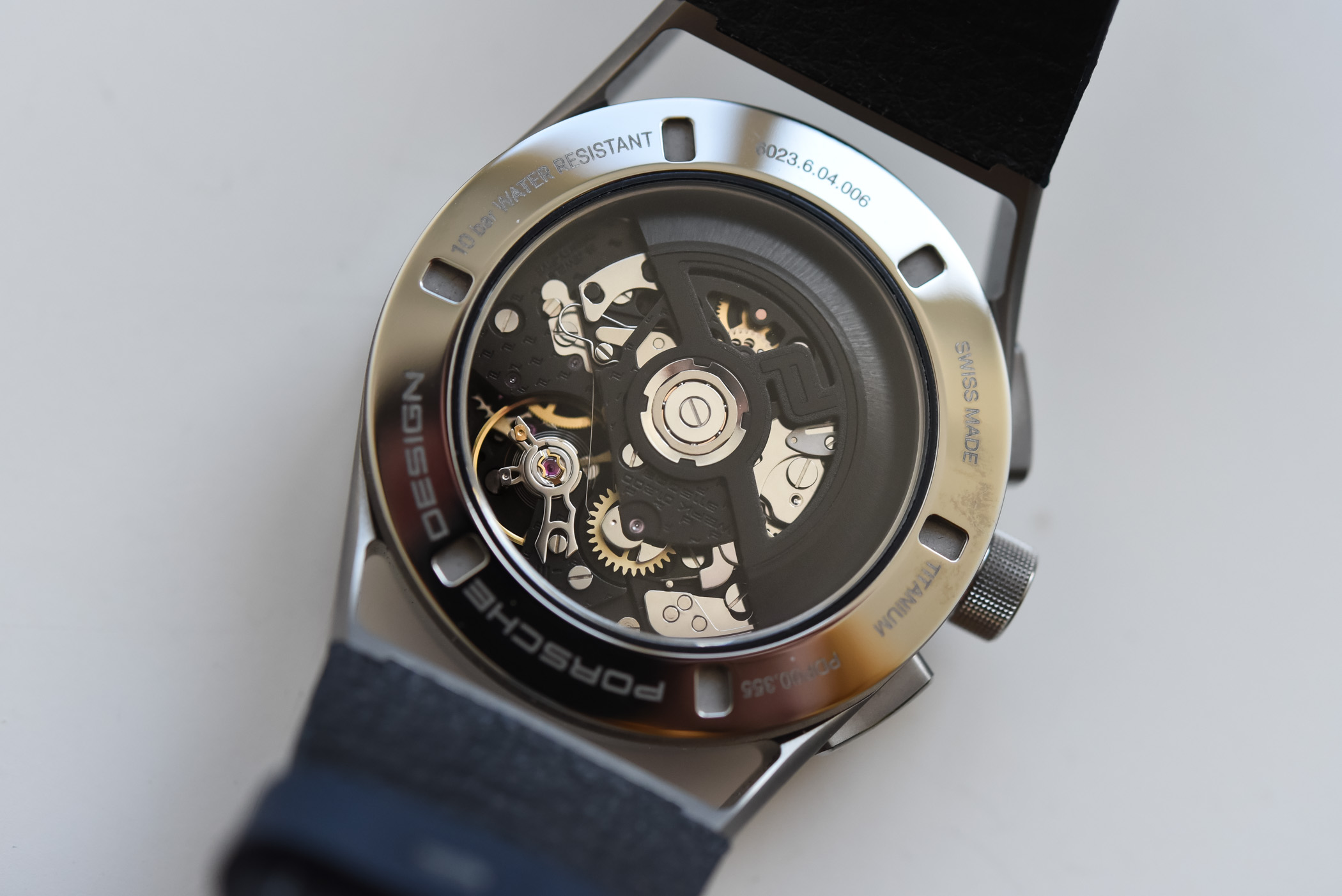



2 responses
Nice one!
The fanboying is painful, as is the writing and the lack of any critical opinion. And whatever one may like, that dial is asymmetrical, isn’t it? Because of the date window?